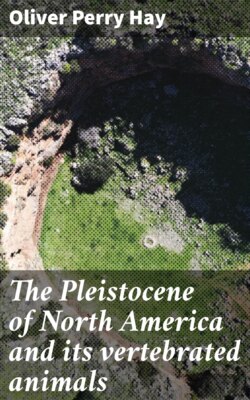Читать книгу The Pleistocene of North America and its vertebrated animals - Oliver Perry Hay - Страница 56
На сайте Литреса книга снята с продажи.
CAPE BRETON ISLAND.
ОглавлениеTable of Contents
1. Middle River, Victoria County.—In 1912 (Proc. Trans. Nova Scotia Inst. Sci., vol. XIII, pp. 163–174), Mr. Harry Piers, curator of the Provincial Museum, Halifax, presented a paper in which he detailed the history of mastodon remains found on Cape Breton Island. At the place above named, in a meadow, at a depth of only 5 inches, was found a right femur. According to Piers’s account, this was discovered about the year 1834, possibly a few years earlier. It came into the possession of the Mechanics’ Institute, at Halifax, and later of the Provincial Museum of Halifax, where it is now preserved. It was noticed and figured by J. W. Dawson in the four editions of his “Acadian Geology.”
2. Baddeck, Victoria County.—According to Piers’s account, a molar tooth of a mastodon, now in the Provincial Museum, was found in 1859, at the place named. This tooth is figured by Dawson, with the femur. Piers states that Dawson was in error in crediting Honeyman with the discovery. Details regarding this are wanting. The molar has 3 crests. In the same museum is a part of a proboscidean tusk, but it is not certain where it was found. It is quite certain that all of these remains are of animals which lived there after the Wisconsin ice had retired.
These localities are not indicated on the map.
